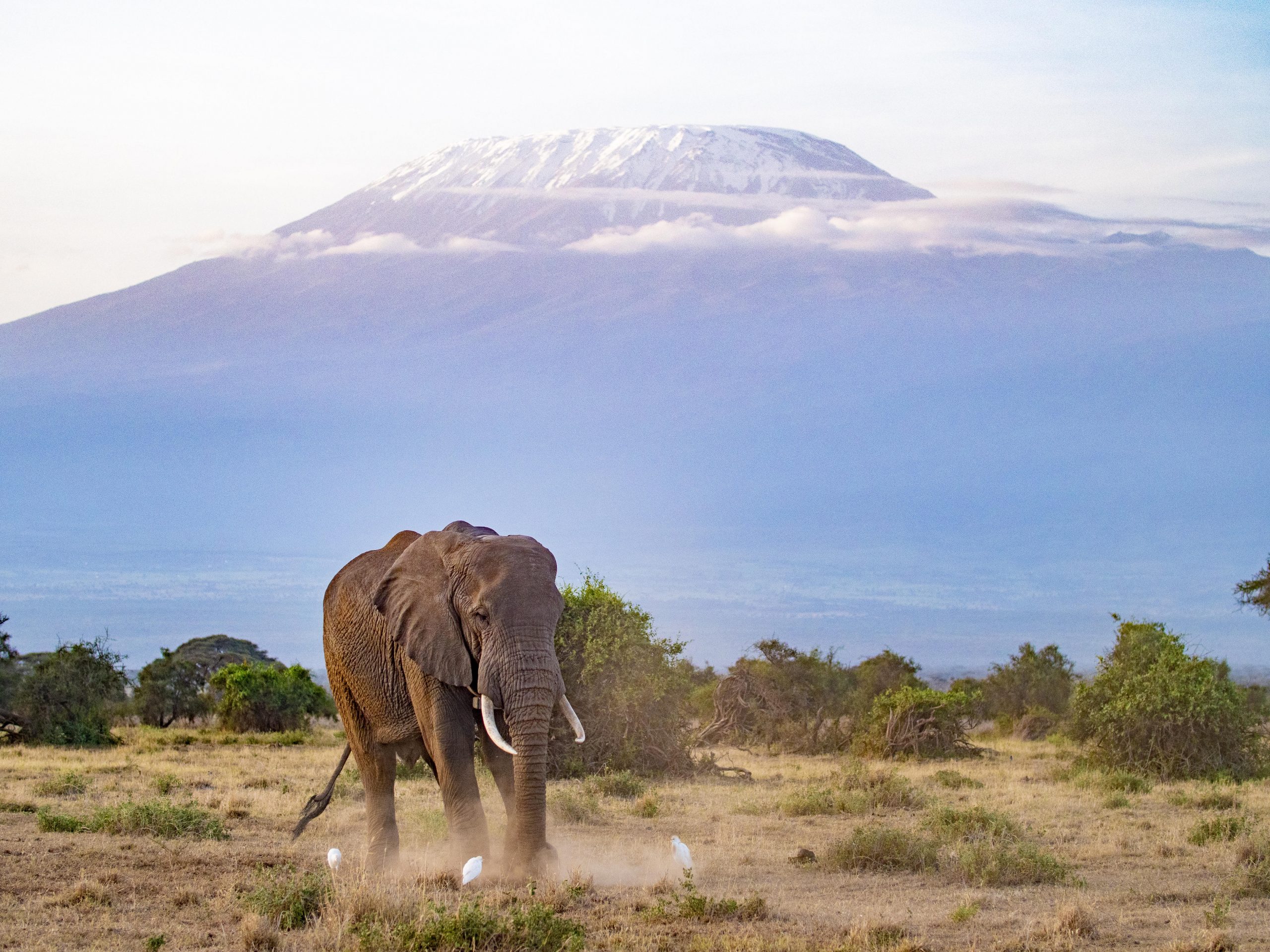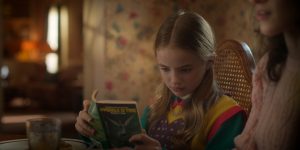
Let’s start at the end. We’re at the base of the Ngorongoro Crater, a two-million-year-old collapsed volcano in Tanzania. A heavy downpour is thumping the roof of our safari vehicle. Yes, it’s raining in Africa. Before we begin the steep ascent up the walls of the crater along muddy brick roads, our tour guide breaks and turns off the ignition. He gestures toward an unseasonably lush clearing where a committee of elephants is assembled to wish us adieu.
For the last week, we’ve been on a press trip in the Serengeti with one unique wrinkle: National Geographic embedded our excursions with the creative talent behind their new natural world series, Queens. In addition to local guides, we were accompanied by National Geographic’s filmmakers, who braved night shoots in open-sided vehicles amongst lions and hyenas. We were in safe hands.
In this final excursion, Faith Musembi, a native Kenyan and producer/director on Queens spent a full day graciously answering our nonstop questions—providing us with a running director’s commentary and a deeper understanding of not only the show’s production but also the continent, its people, and their connection to wildlife. As we came face to face with the elephants, a hush finally fell over the car as we took in the beauty of the surroundings.
The Ngorongoro Crater filmed from a helicopter. (National Geographic for Disney)
At an elevation of 5,900 feet above sea level, rain clouds are hovering just above our heads. I embrace the rain and roll my window down as if to bottle up the soon-to-be fleeting sights, sounds, and smells of Ngorongoro. I hit record on a short video of the approaching elephant, no further than 10 feet away. It’s my favorite video of the trip.
Finally, Musembi breaks the silence. “She knows she’s magnificent,” she whispers as the matriarch swings her trunk around and drifts past the vehicle.
****
Almost every aspect of Queens breaks the natural history mold. The seven-episode series, which premieres March 4 on National Geographic and streams on Disney+ the next day, is told entirely from the perspective of the matriarchs and female leaders in the animal kingdom. The energy running through the show is immediately captivating, from Angela Bassett lending her gravitas as the series’ narrator to the usage of commercial music, a rarity, in natural world programming.
However, Queens’ impact may ultimately be measured by its ability to crown the next generation of female filmmakers; the series is shot and produced predominantly by women in a documentary space that has historically been run by men. The series takes its mission a step further too, pledging to work with and develop the skills of local filmmakers in the regions in which they shot.
The series’ executive producer Vanessa Berlowitz spent nearly 25 years of her career producing award-winning BBC titles ranging from Planet Earth to Frozen Planet, where she traveled the North and South Pole with David Attenborough. Then her life changed course. She became a mother. She moved to Africa. She followed elephants in Botswana for two years.
“I was thinking about matriarchy a lot,” she says of her time in Botswana. “Both how it applies to myself and how it applies to the elephants.”
During that time she came up with “Night Queens,” a pitch about the matriarchs of lions and hyenas that eventually morphed into the first episode of Queens, which features stunning night-vision footage inside the Ngorongoro Crater.
A common theme throughout the week when we sat down with both Berlowitz and Musembi was the pride they took in seeing the original vision of Queens through.
“[Queens] is a chance to diversify the talent base and really make a change,” Berlowitz tells us. “When you go to [National Geographic], it’s much more diverse and people care about diversity. They were the right people to pitch this to. They were ready for it. And they have actually realized it.”
Musembi, while elated to be considered for a project that felt like a “big dream,” was more skeptical from the outset. And for good reason. Local filmmakers like her often don’t get opportunities when Western productions come to Africa.
“I thought it was one of those projects where people say, ‘We’re going to work with locals,’ and they drum up financial support and then ditch the locals and do it how they wanted to anyway,” Musembi explains. “This wasn’t a thing to check off boxes. It was genuine to change how things are done.”
The female-led production team spent four years working on a project that spans the African savanna where we meet the aforementioned elephants and a epic standoff between lions and hyenas set at night inside the Ngorongoro Crater, to the mountains of Ethiopia, the rainforests of Congo, and the coastline of Baja California Sur. The matriarchs of Queens, the show’s “characters” range from an underwater adventure with a pod of orca to a trip to the rainforest of the Congo where they captured rare footage of bonobos, the only species of ape where the females lead.
And breaking from the norm, the final episode turns the camera around and highlights both the filmmakers behind the scenes and women from around the globe who’s work helps us understand the diverse species seen on screen.
Team Lioness unit leader Sharon Nankinyi during an interview with Faith Musembi. (National Geographic for Disney/Job Githaka)
While the filmmakers responsible for each episode had the autonomy to bring their voice to the production, the creative team pushed to further separate Queens from the pack with a “brand and house style.” A major part of achieving that comes from the series’ soundtrack which takes a cue from narrative features and more recently “prestige” documentaries.
With Queens, natural world programming enters its needle drop era. Queens features an original main title song from British singer-songwriter Alewya and features tracks from artists like MIA, Santigold, and Sia. The original score was composed by Morgan Kibby, a former member of the French band M83, who’s broken in the narrative film and television world, recently composing shows like American Horror Story, The Watcher, and Tales from the Walking Dead.
“I’ve always wanted to use commercial music in natural history because you need to change it up,” Berlowitz says. “You need to be appealing to broader and younger audiences. I also know that when I watch a drama, I hear a track and it instantly know the feeling I’m supposed to have.”
****
During game drives on our trip, Berlowitz and Musembi would take turns hopping in our vehicle. Each time, they imparted hours of stories, insights, and always coloring in a life spent observing wildlife in the bush. When I finally had the chance to speak to them together on the record, the conversation steers to their shared pride in Queens embracing local culture.
“We talk about the location that we’re in,” Musembi says of the episode she produced and herself participates in on-camera interviews. “We incorporate music into those spaces. It’s something we don’t often get to hear African music, funky techno house, old school Congolese rumba. That never gets put on natural history. We had the freedom and the team around us to find the songs to shape this vision.”
Queens Cinematographer and Mentee Erin Ranney films lions in Tanzania. (National Geographic for Disney/Millie Marsden)
Whether Queens roars loudly enough to shift the paradigm in the nature doc space is up to discerning audiences. Ask a filmmaker about getting any project made and they’ll tell you it’s a small miracle; ask the minds behind Queens what success looks like, and they’ll tell you this project has already activated its much more loftier ambition to, as Berlowitz put it, hand back the tools, techniques, and the skills to people who live most closely to the wildlife.
“It’s more important that Faith and her people, and their communities, can tell these stories at the highest, most beautiful and creative level,” Berlowitz says. “They are the guardians.”
Berlowitz pauses, leans in closer, and turns her head toward Musembi. “It needs to come from you, back out into the world,” she says.
Queens premieres on Monday, March 4 on National Geographic. It streams the next day on Disney+.
The post You’ve Never Seen a Nature Doc Like Nat Geo’s Queens appeared first on Den of Geek.







